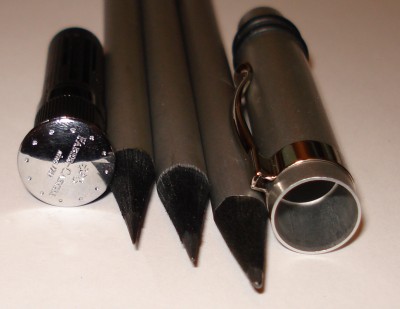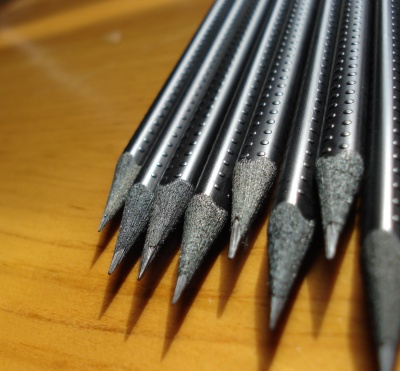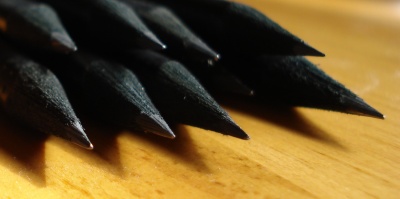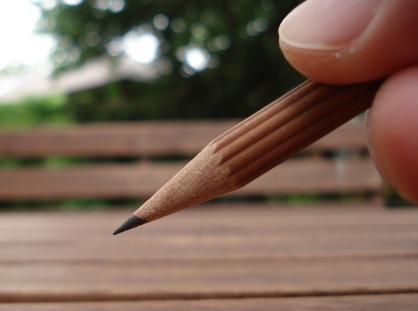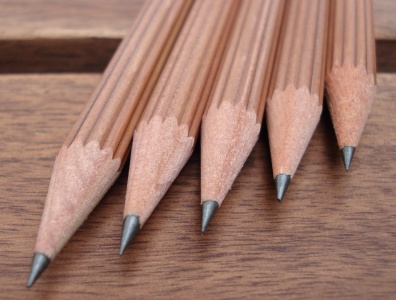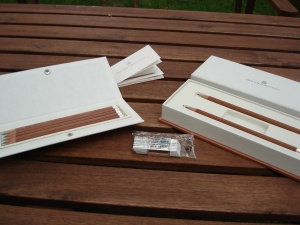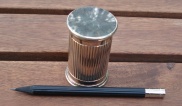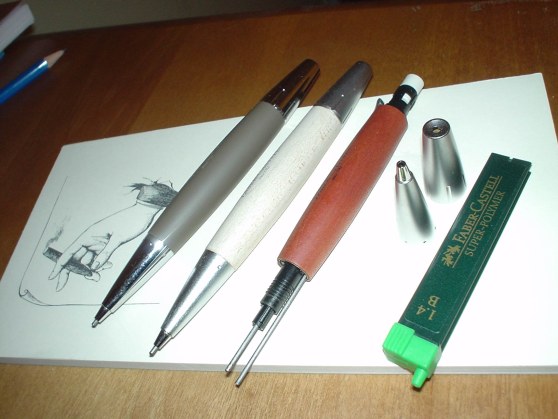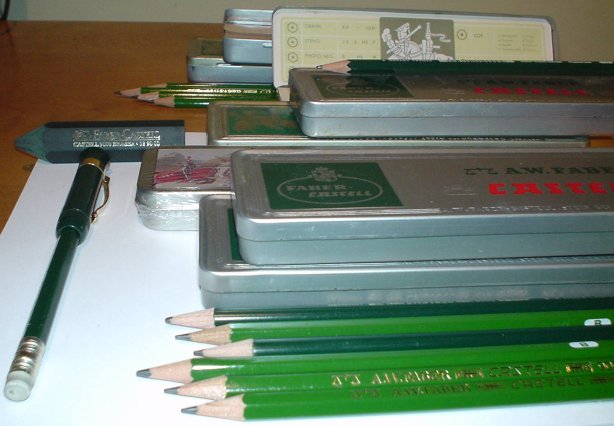
The new Faber Castell 9000 centennial tin has a traditional graphic of mounted knights duelling. What a careful examination reveals is that the knights are duelling with pencils – the victor with a Faber Castell 9000, and the losing opponent a broken yellow pencil. The yellow pencil might represent a rival manufacturer’s product, or the generic office pencil. Whatever the case, there is no doubt about Faber Castell’s commitment to recognizing their product’s history and heritage.
The tin comes with 12 sharpened HB Faber Castell 9000 pencils, and a green plastic eraser. I have a number of original tins, and this newer box is a nice revision. It differs in having an eraser rather than foam to cushion the pencils during transport. (The pencils are thus a bit shorter than their predecessors). This is very sensible – foam disintegrates with time, but the eraser also acts as a cushion to the pencil points during shipment, and is additionally a useful object once the box is opened. It’s also nice to see the commitment to attractive packaging and the upscale market placement of these pencils.
These pencils are also available individually, in a wide variety of grades, and a “matching” eraser (pencil shape) is available. (The Grip 2001 line also offers a matching eraser.)
A variation is the “perfect pencil” – a four function cap that serves as a pencil extender when placed on the pencil crown, a protective cap when placed on the point, a clip provider – and – has a pull out sleeve with a built-in sharpener. With an eraser-capped pencil (with quality white plastic, and not generic office supply store pink), the perfect pencil stands as an incredible pencil innovation, solving several pencil user issues – portability, point protection, pencil extension, sharpening and erasure – in a small logical device that adds very little weight or bulk to a pencil. The ability to create such a brilliant and practical object demonstrates why Faber Castell leads the world in their field.
The pencils? Oh yes the pencils… they are superb. Along with a select few others, they are an art and design staple. They are hexagonal, a handsome forest green (darker than predecessor 9000s) with gold lettering. A URL on the side is a tip-off that they are new. They sharpen without fuss, and I’ve had no lead breakage. The graphite seems to have it all – smooth, non-breaking, keeps a point, and solidly dark for the grade. Even a 4B seems to last quite a while. The casing halves are matched, and the varnish comfortable. It is clearly manufactured to the highest standards.
The looks are traditional compared to a Grip 2001, but a pencil that been made since 1905 is something to contemplate, and the quality is first rate. Overall, it ranks as one of the great woodcase pencils, one that deserves recognition for a century of quality and production. Congratulations, Faber-Castell!

